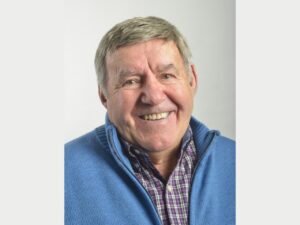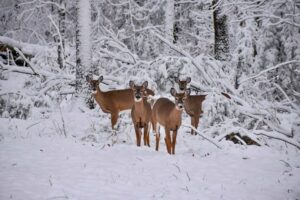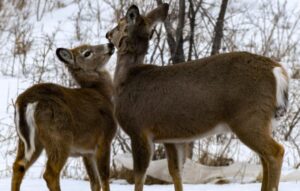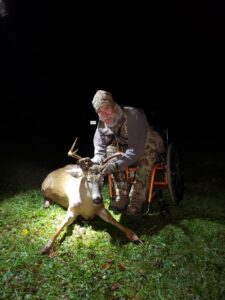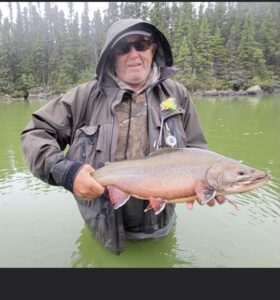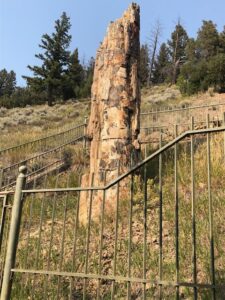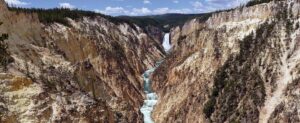So far, there have been no figures released by MassWildlife regarding the statewide or district harvests totals. Those figures have been transferred to MassWildlife’s new system and more than likely we will have to wait a while. The new system undoubtedly will have a few bugs to be ironed out.
Readers may recall that the new licensing system was started on December 1. In his December report to the Berkshire County League of Sportsmen, Western District Supervisor Andrew Madden said the roll out was not without problems and complications, but much of them had been worked out pretty quickly. He advises us to be patient with it. If we have some kind of emergency situation and can’t report a harvest, or if we need to print something and can’t, call his office and his staff will do its best to help. Madden believes it will be a really good product once they get the glitches worked out.
As for local deer harvest numbers, his general impression was the numbers were pretty good at most of the WD check stations compared to past year.
Madden noted that MassWildlife did some Covid-19 sampling tests at the various stations, per request of the US Department of Agriculture (USDA). He will try to stay on top of it and let us know the results when made available.
A fight to the death
So far, this Primitive Firearms deer hunting season has been rather comfortable, weather wise. Not like some years with cold winds blowing snow or sleet in my face, down my boots and plugging up the scope on my gun. This year has been downright pleasurable.
Sometimes, while sitting on my deer stand (a stump) for long periods of time without any deer even thinking of coming my way, my mind tends to wander. Let me tell you about my most recent wandering.
I vividly remember an occurrence while deer hunting on Beartown Mountain about 40 years ago. I was walking down a logging road to where my truck was parked after a long unsuccessful day of hunting. From where I was walking, I could look across a ravine and brook and see Beartown Mountain Road. There, I could see a hunter using a drag rope, dragging a deer down that road to his vehicle which was parked next to mine. As I followed the wood road down and got closer to the other hunter, something just didn’t seem right. Yes, he was dragging a deer alright, for I could see the large antlers – but something wasn’t right.
It wasn’t until I reached the road and we both converged that I could see what was awry. He was dragging the heads of two huge bucks with intertwined antlers. He came across the two dead bucks in the woods and decided to remove their heads in order to mount them. What an interesting mount that would be.
It was evident that one of the bucks was dead longer than the other for the flesh was not as red. I can’t remember the number of points on each deer, but the sizes and thickness of the broad beams and antlers were tremendous. They had to be the two largest bucks on that mountain, and they fought to their deaths for the right to breed with the does. I couldn’t help but think how long the one deer lived after the other one died, and how they both must have suffered. Probably some puny little 6 pointer got to breed all those does. Sometimes the old adage of “survival of the fittest” doesn’t always hold true.
I didn’t get the other hunter’s name but wish I had. I would love to see how that mount came out.
I have never forgotten that sight after all these years, and probably never will.
Nice BNRC articles
The Berkshire Natural Resource Council’s (BNRC) mission is to protect and preserve the natural beauty and ecological integrity of the Berkshires for public benefit and enjoyment. They preserve or keep land so we can all have access to it, enjoy it, find peace and serenity in it. They keep land so we can all experience the beauty that the Berkshire mountains have to offer.”
If you are a donor to the BNRC, you probably look forward to reading their periodic report entitled the Land keeper’s Report. In this fall’s issue, there are two especially nice articles. One is an article entitled “Hunting, Land Protection, and the Berkshires.”
In bold letters it begins the article thusly: “For nearly a century, hunters have had an enormous role in North American conservation – and the formation and support of BNRC. The article highlights Rich Montone, a bowhunter and BNRC’s Development Director. “There’s no healthier meat than venison, says Rich, “high in protein, low in fat, obviously free of preservatives or growth hormones. Two deer will feed my family for half a year or more and it’s a good way to help conserve what’s special about this region.”
MassWildlife relies on conservation funding created by the sale of hunting, freshwater fishing, and trapping licenses – and the sale of related permits – to conserve land in the Berkshires and throughout the Commonwealth. Such funding has enabled BNRC and MassWildlife to collaborate on many Berkshire conservation projects, such as Alford Springs in Alford and Steadman Pond in Monterey/Tyringham.
The article then went on and explained the training and licensing process to legally hunt in Massachusetts.
“Some hikers worry about being in the woods during hunting season.” wrote DFW Western District Supervisor Andrew Madden. “Hunting is a very safe activity and accidents are extremely rare. Even so, it is a good idea to wear blaze orange during hunting seasons, and to have your dogs in blaze orange, too.”
The article ends in these words: “The conservation ethic of hunters, and the funds created through legal hunting, have made an enormous difference for BNRC’s ability to protect the natural beauty and ecological integrity of the Berkshires. We wish hunters an enjoyable, safe and fruitful hunt this fall, and thank them for their part in making the Berkshires outdoors free for everybody to enjoy.”
It’s no secret that hunters rarely have anything positive written about them. What a nice change to read this article, ey? Thank you for that BNRC.
The other article was the announcement of the BNRC’s acquisition and protection of some 360 acres of forest and waterfront on Round Pond (Housatonic) from the Long Pond Road Nominee Trust. That property complements the recent transactions on Tom Ball Mountain in West Stockbridge and weave together over 1,000 acres of conservation land.
To complete this project, BNRC partnered with the MA Department of Fish & Game who purchased a conservation restriction over the acreage. These steadfast partnerships allow BNRC to leverage their donations and secure tracts of land that might otherwise be out of reach.
We are asked to be patient until BNRC can open the reserve, have off-street parking and marked trails.
And now, comes yet more good news. In last Tuesday’s, (December 14) Eagle “Big slice of Monterey now preserved” by Heather Bellow, it mentioned that 180 or so acres surrounding the Bidwell House are about to be protected from development after the non-profit gave the land to the Monterey Preservation Land Trust and the BNRC to be jointly held. According to the article, the land is close to the Appalachian Trail Corridor and more than 12,000 acres at Beartown State Forest. The Bidwell land also connects to 797 acres of other conservation property held by the Monterey Trust and BNRC.
It would not have been possible without the donation of $300,000 to the Monterey Land Trust by Louis and Joyce Scheffey, in an effort to preserve the Bidwell property. Be sure to read that Berkshire Eagle article.
Long time, and now retired, BNRC Director George Wislocki, once described what they do as “God’s Work”. No argument here.
If you happen to have a few extra bucks lying around, that is a good place to donate it. Who knows, maybe you’ll earn some extra points at the Pearly Gate.


